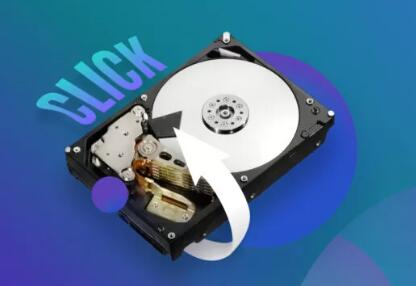Recovering data from a formatted hard drive can be a complex process, but it is often possible depending on the circumstances. When a hard drive is formatted, the data on the disk is not immediately erased; instead, the system marks the space where that data was stored as available for new files. This means that unless new data has overwritten the old data, there may still be a good chance of recovery.
1. Hard Drive Formatting
What is a Hard Drive Format?
Formatting a hard drive refers to the process of preparing a storage device for data storage by creating a file system. This operation is performed when a new disk is installed or when an old disk is being reused. Formatting establishes a structure for storing files and organizing data, including creating directories, file tables, and allocating space for files.

There are two main types of formatting:
Quick Format: This type of format removes the file system index but leaves the data intact. Only the areas marked as used are cleared. A quick format is faster because it does not check the drive for bad sectors.
Full Format: A full format not only removes the file system index but also checks the drive for bad sectors. It can take a long time to complete, but it is more thorough in checking the health of the drive.
Types of Hard Drive Formatting
Hard drives can be formatted using different file systems, each suitable for specific operating systems:
NTFS (New Technology File System): Common for Windows devices, it supports large files and volumes.
FAT32 (File Allocation Table 32): A legacy file system supported by both Windows and macOS, but it has limitations like a 4GB file size limit.
exFAT: Designed for larger files and flash drives, commonly used on external storage devices.
HFS+ (Mac OS Extended): A file system used by macOS.
APFS (Apple File System): A newer file system for macOS, designed for flash storage.
The Impact of Formatting on Data
When a hard drive is formatted, the data is not completely erased. Instead, the file system structure is reset, and the areas where data was stored are marked as available for new data. This makes it possible to recover data unless the space has been overwritten by new data. A full format, however, is more thorough in erasing old data but may still leave recoverable traces.
2. Is It Possible to Recover Data After Formatting?
Factors Affecting Data Recovery
Data recovery after formatting depends on several factors:
Type of Format: A quick format may offer better chances of recovery since the data is not overwritten, while a full format could make recovery more difficult.
Amount of Overwritten Data: If new data has been written to the formatted drive, the chances of recovery decrease as it could overwrite the old data.
Time Since Formatting: The sooner you attempt recovery after formatting, the higher the chances of success.
Conditions for Successful Recovery
Successful data recovery depends on:
The absence of overwriting: If you haven’t used the drive after formatting, the data is more likely to be recoverable.
The use of proper recovery tools: Data recovery software or professional services can help recover the formatted data.
3. The Importance of Stopping Usage After Formatting
Why You Should Not Write to the Formatted Drive
Once a hard drive is formatted, the operating system considers the space on the disk as available for new data. If you continue using the drive (such as downloading files or installing programs), the new data may overwrite the space where the old data was stored, making it more difficult or impossible to recover the lost files.
Risks of Overwriting Data
Overwriting is the primary risk in data recovery. Once new data is written to the sectors previously occupied by the deleted data, recovery software may no longer be able to access the original files. This is why it’s crucial to stop using the drive as soon as you realize you’ve formatted it by mistake.
4. Step-by-Step Guide for Data Recovery
Step 1: Prepare for Data Recovery
Before beginning the recovery process, ensure the following:
Do not write any new data to the formatted drive.
Use another computer or storage device to download and install recovery software.
If the formatted drive is your primary device, connect it as a secondary drive to another computer for recovery.
Step 2: Choose the Right Data Recovery Software
Panda Assistant is a versatile and user-friendly software designed to assist with data recovery across a variety of devices and file systems. Whether you’ve accidentally deleted important files, lost data due to a system crash, or need to recover information from a formatted storage device, Panda Assistant provides an intuitive interface to make the recovery process as seamless as possible. It supports a wide range of file types, including documents, images, videos, and more, ensuring that even complex data loss situations can be handled efficiently.
One of the standout features of Panda Assistant is its powerful scanning algorithms, which can detect and recover lost files from different types of storage media, including hard drives, SSDs, USB drives, and memory cards. It offers both quick and deep scan options, allowing users to choose the level of thoroughness based on their needs. Additionally, Panda Assistant provides a preview feature, enabling users to view recoverable files before committing to the restoration process.
Step 3: Install and Launch Data Recovery Software
Once you’ve selected and downloaded the recovery software, install it on a separate drive to avoid overwriting data on the formatted drive. Launch the software and select the formatted drive from the list of available devices.
Step 4: Scanning the Formatted Hard Drive
The software will typically offer options for scanning the drive. Choose the most thorough scan (often labeled as “deep scan” or “advanced scan”) to maximize the chances of recovering your files. The scan process may take some time, depending on the size of the drive.
Step 5: Previewing and Selecting Recoverable Files
After the scan is complete, the software will display a list of recoverable files. Many tools allow you to preview files before recovery to confirm they are intact and not corrupted.
Step 6: Recovering Your Data
Select the files you wish to recover and choose a destination folder. Make sure to save the recovered files to a different drive to avoid overwriting data on the formatted drive.
Step 7: Save Recovered Data Safely
After recovery, ensure you back up the recovered files to a safe location, such as an external hard drive or cloud storage.
5. Advanced Methods for Hard Drive Data Recovery
Using Disk Management Tools
In some cases, you may be able to use your computer’s disk management tools to recover lost partitions after a format. Tools like Windows’ Disk Management or macOS’s Disk Utility can help identify unallocated space and recover lost partitions.
Using Command Prompt for Recovery
For advanced users, Windows Command Prompt can be used to access and attempt recovery of lost files. This is typically used when the drive’s file system is damaged or inaccessible.
Using TestDisk for Partition Recovery
TestDisk is an open-source tool that specializes in recovering lost partitions. It can be particularly useful if a formatted drive has become unallocated or the partition table has been damaged.
6. When to Seek Professional Data Recovery Services
Signs You Need Professional Help
If you are unable to recover your data using software, or if the drive has physical damage, it’s time to consider professional data recovery services. Some signs include:
Unusual noises coming from the drive (e.g., clicking or grinding sounds).
Inability to detect the drive in the operating system.
Corrupted or incomplete files after software recovery.
Choosing a Reliable Data Recovery Service
Look for services with:
Proven success in recovering data from formatted drives.
Secure handling of your data.
Transparent pricing and turnaround time.
The Cost and Time Involved in Professional Recovery
Professional recovery services can be expensive, with prices typically ranging from $100 to $2.000 depending on the complexity of the recovery. The time frame may vary, but it usually takes anywhere from a few days to several weeks.
7. Preventing Data Loss in the Future
Best Practices for Backup
Regularly back up your files using external drives or cloud storage.
Implement an automated backup solution to ensure files are regularly saved.
Understanding File Systems
Familiarize yourself with different file systems (NTFS, FAT32. etc.) and how they affect data storage and recovery.
Regular Disk Maintenance
Perform regular checks and maintenance on your hard drives, including defragmentation (for HDDs) and health checks using disk monitoring tools.
About us and this blog
Panda Assistant is built on the latest data recovery algorithms, ensuring that no file is too damaged, too lost, or too corrupted to be recovered.
Request a free quote
We believe that data recovery shouldn’t be a daunting task. That’s why we’ve designed Panda Assistant to be as easy to use as it is powerful. With a few clicks, you can initiate a scan, preview recoverable files, and restore your data all within a matter of minutes.

 Try lt Free
Try lt Free Recovery success rate of up to
Recovery success rate of up to









